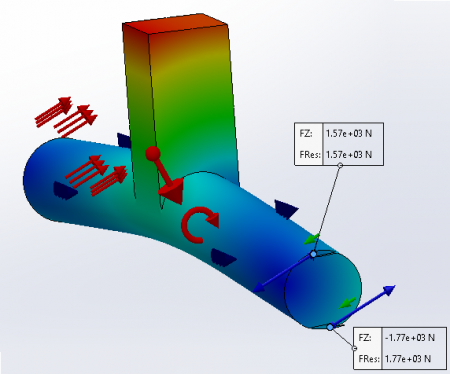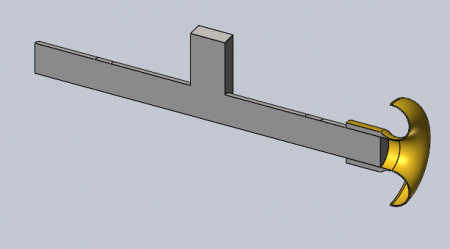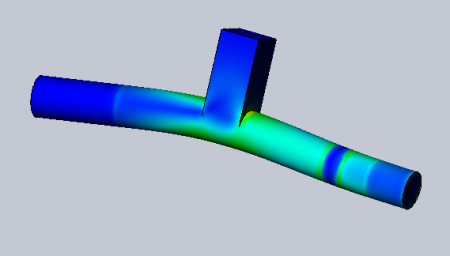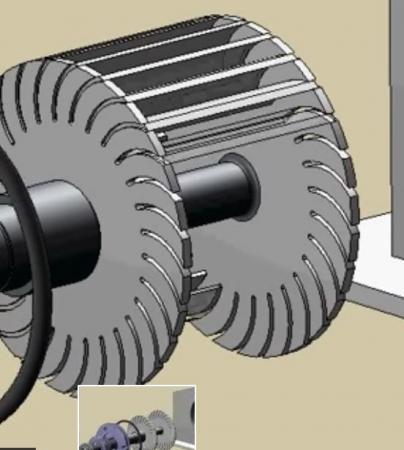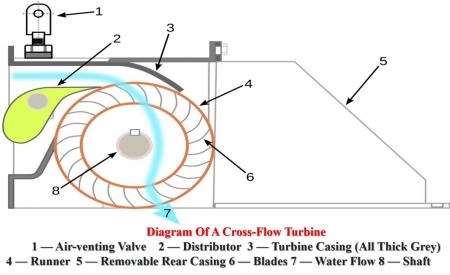Hello
I'm busy simulating a hydraulic turbine rotor in SolidWorks, but I'm having a problem with the imposed displacements that is distorting my results.
I can't share the model, but here's an overview of the problem.
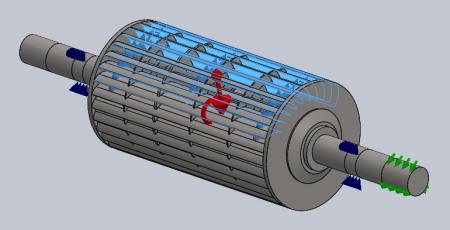
The challenge is to simulate the action of the fluid on the rotor blades. To do this, I determine a pressure to be applied to the blades that generates the desired torque. Only the blades facing the intake area are subjected to pressure. The rotor is supported by 2 self-aligning bearing supports.
My problem lies in the imposed displacement to block the rotation. The only solution I have found is to block the rotation of the cylindrical face on which the flexible coupling is fitted, but this also hinders the radial displacements as well as the alignment of the axis. The cylindrical face of the coupling is in this case considered as a slide blocked in rotation, which does not correspond at all to reality (the end of the shaft carrying the coupling is free). The simplified model illustrates the problem well.
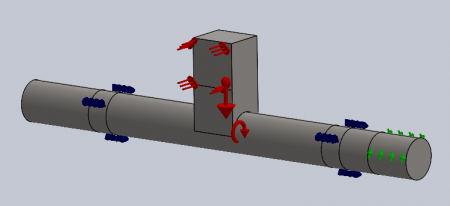
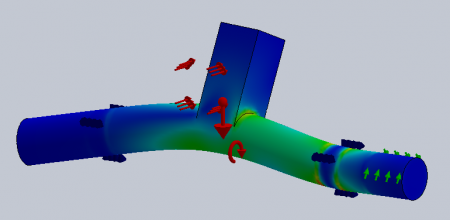
Do you know of a way to lock the spinning shaft "relative to itself", i.e. by preserving the degrees of freedom in the radial plane and at the alignment of the axis? Or do you see another way to simulate my problem?
It is obviously not possible to apply a resisting torque corresponding to the torque generated by the pressure on the blades (even with 2 identical opposing torques, SW cannot calculate).
Thank you in advance for your ideas and suggestions.
I am attaching the simplified template.
rotor_shematise.sldprt

